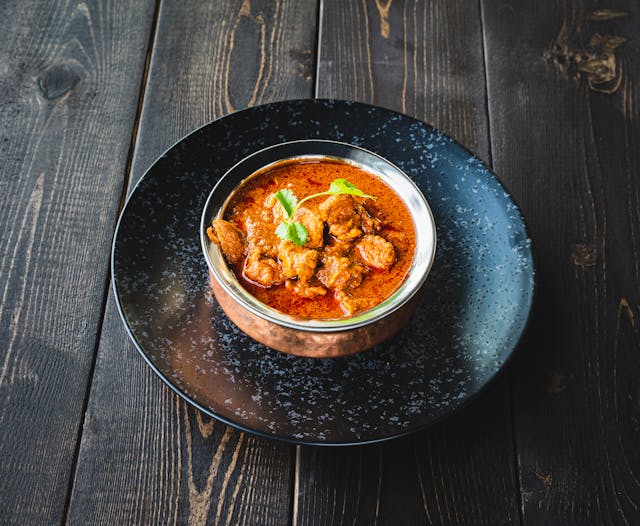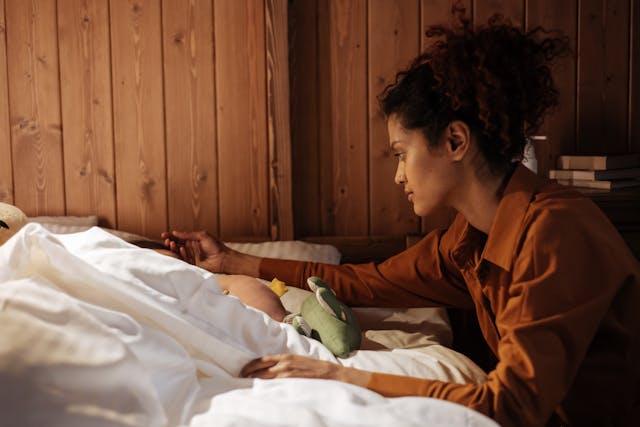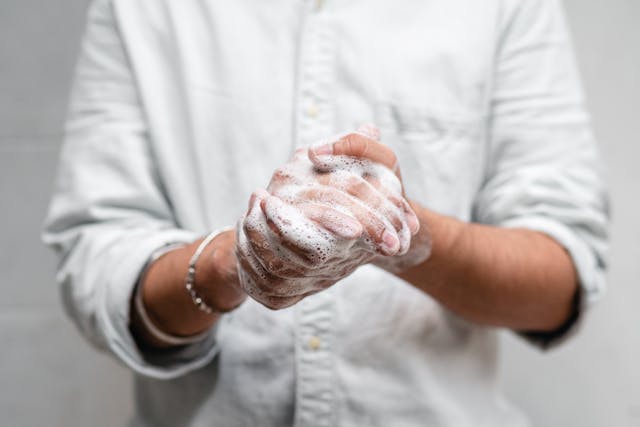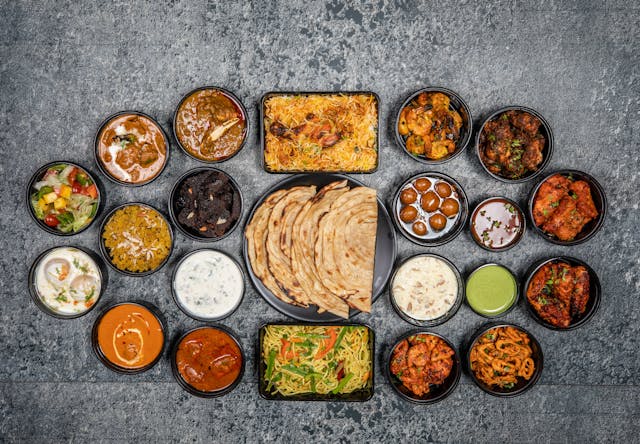Food poisoning in India is a big problem. But it’s not just the infamous ‘Delhi belly’ from street food that tourists worry about. While we all like to think it’s from outside food—and certainly, a lot of it can be—Home food in India accounts for about 13.2% of food poisoning cases. And it’s just as dangerous and life threatening as anything from your local shawarma or kebab place.
There are many documented stories of home food being the cause of fatal food poisoning, such as a mother and her two children who died in Odisha.
What is Food Poisoning?
When a food item isn’t cleaned, cooked, or stored correctly, it can have viruses, fungi, parasites, and bacteria in it. Common culprits in India include:
- Bacteria: Salmonella, campylobacter, E. coli, Clostridium botulinum, and Staphylococcus aureus
- Viruses: Norovirus, sapovirus, rotavirus, astrovirus, and Hepatitis A
- Parasites: Toxoplasma and Entamoeba
- Fungi: Bacillus cereus
Essentially, the bacteria, virus, parasite or fungi are eaten or drunk. They survive and grow in your digestive tract. They produce toxins as they multiply, which invade the gut lining. Symptoms start within a few hours, or up to 72 hours of eating the bacteria. These can include:
- Diarrhoea
- Nausea
- Vomiting
- Stomach cramps and pain
- Fever
- Headache
- General weakness
Usually, within 12 to 48 hours, the symptoms ease. The vomiting and diarrhoea are the body’s way of getting the toxins and whatever is causing the illness out; you simply have to let the illness run its course and give supportive care.

Why Food Poisoning is So Worrying
While most cases of food poisoning are unpleasant and uncomfortable, within a few days, most people recover fully. However, there are two extremely worrying outcomes. Increasingly, research is showing huge and long-term impacts of food poisoning.
Long Term Outcomes from Food Poisoning
For some people, the side effects of food poisoning will change their life forever.
Mari Tardiff may never walk again after a 2008 bout with Guillain-Barré Syndrome. This was caused by drinking raw milk contaminated with Campylobacter. In America alone, more than 200,000 people go on to develop long term problems after food poisoning. These can include:
- Irritable Bowel Syndrome (IBS) which is a lifetime disease with abdominal pain, bloating, gas, cramps, constipation, and diarrhoea
- Reactive arthritis, with pain and swelling in joints, triggered by an immune response to food poisoning
- Guillain-Barre syndrome, where the body attacks the nerves, resulting in paralysis
- Organ failure, such as kidney haemolytic uremic syndrome
- Diabetes after inflamed pancreas
- High blood pressure due to kidney damage
- Colon inflammation and eventual removal
- SIBO (Small intestinal bacteria overgrowth) with bloating, stomach pain, nausea, weight loss, malnutrition, and a loss of appetite.
Death from Food Poisoning
While we might think food poisoning is common and mild, it can kill. This is particularly for elderly, immune compromised, children, and pregnant women. In SE Asia, approximately 175,000 people die from food borne diseases every year. 40% of food poisoning occurs in children, and India’s antibiotic resistance crisis makes it harder to treat the most vulnerable.bars
Pregnant women need to be more careful that normal about how they eat. During pregnancy, the immune system is suppressed so the body allows the baby to grow and doesn’t attack it, thinking it’s an invader. Added to this, all energy goes towards growing the baby, so there’s no extra resources to fight off illness. In the US, half the people who get sick from a bug called listeriosis are pregnant.
The unborn baby is also highly at risk– food poisoning in the mother can cause stillbirth, miscarriage, low birthweight, meningitis, bacterial blood infections, disabilities, or premature delivery. Babies have almost no immune system and don’t have any way to fight off disease.
What to Do If You or Your Child Has Food Poisoning
The body does most of the work, ejecting the toxins and bugs (unpleasant but it makes us better). Supportive care is all we can do, such as rest, fever management, hydration with water, coconut water, and ORS. If the child wants to eat, plain bland food such as dry toast, curd rice, or plain rice may be tolerated. If the illness persists, seek medical care as some parasites require treatment.
If your child doesn’t want to eat, that’s expected and it’s ok. After a day or two, if they are still not eating and symptoms persist, take them to the doctor. Also, go to the doctor if they are not drinking/ passing urine, or if they have 6+ episodes of loose motions a day.
Pregnant women should seek medical advice immediately if they contract food poisoning.
In general, do not:
- Take antibiotics, unless prescribed. They are ineffective against viruses, parasites, and fungi. They also kill good bacteria in your digestive tract, which makes recovery slower.
- Take anti-diarrhoea medications unless you are travelling or have an unavoidable engagement. Diarrhoea is getting rid of the toxins; stopping it simply prolongs the illness.

Good Food Hygiene to Avoid Food Poisoning
Contamination occurs when food is not:
- Fresh
- Washed thoroughly
- Handled correctly
- Cooked to a safe internal temperature
- Refrigerated or frozen promptly
The five biggest culprits in India include:
- Rice. This may be surprising, but it naturally can contain a germ which survives the cooking process. The harm occurs when the rice is left at room temperature and the germ multiplies. Refrigerate rice once it’s reached room temperature (leaving under a fan can cool it down faster) and consume refrigerated rice within three to four days. Make sure to reheat it thoroughly to at least 74C.
- Chicken. This contains Campylobacter and Salmonella which are hard to kill. Make sure you store uncooked chicken in the fridge, not at room temperature. Cook it thoroughly. Be careful to store uncooked chicken carefully so it doesn’t drip or contaminate anything else. When you reheat, do so thoroughly.
- Fruit and vegetables: Germs exist everywhere, including fresh produce. You will likely be washing your produce anyway, but also don’t store cut fruit and vegetables at room temperature unattended.
- Milk and dairy products: Unpasteurised milk can carry a lot of different bacteria types. There are a wide variety of pasteurised milk options these days, choose them. Also, dispose of tainted milk that has gone off. Curd should not be made from expired milk.
- Sprouts: Because they grow in warm damp environments, they can also grow bacteria. Cooking sprouts can kill the germs.
In general the rules to keep food safe are:
- Cooked food should be refrigerated after two hours at room temperature. Any cooked food kept at room temperature longer than two to three hours should be discarded.
- Food can be safely eaten after three to four days in the refrigerator
- Refrigerator temperature should be between one to four degrees Celsius
- Food should be reheated to at least 74 degrees Celsius. This is the temperature that bacteria, viruses, and fungi die.
- Smell and taste are not an indicator of food safety. Bacteria can be present and everything still tastes and smells great
- Cook food thoroughly- over 74 degrees Celsius to kill bacteria and viruses
- Keep cooked and raw foods separately. Store chicken and uncooked meats in the fridge, in the bottom tray so they can’t drip on other food items
- Wash your hands with soap and water after going to the bathroom, after handling raw meat, and during food preparation
- Wash chopping boards and knives thoroughly, particularly after chopping or preparing meat
- Don’t let cockroaches live in your home- they are carriers for bacteria like salmonella. Get pest control in to exterminate them.


